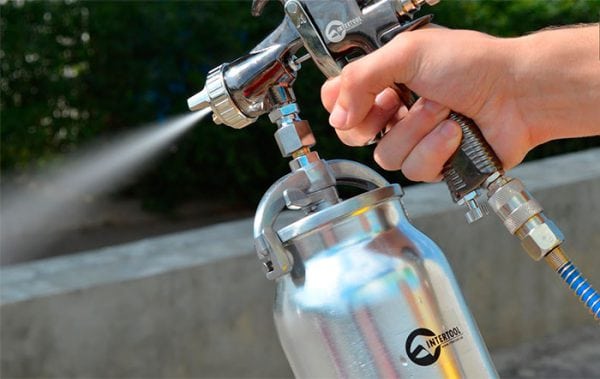The viscosity of the paint most clearly characterizes its suitability for use and its characteristics - color saturation, uniformity of coating, brightness. The material should flow well, but not drain. This property also determines the technical features of the application. There are several types of viscosity:
- The process of measuring the viscosity of paints and varnishes
- Recommendations
- Deviations from the norm

- Newtonian. This type does not depend on shear stress, but on the nature of the substance, its temperature and pressure.
- Effective plastic. For systems having an internal thixotropic structure.

Viscosity can be absolute (dynamic), relative and conditional.
Viscosity is a characteristic property of liquid materials to resist the movement of one part of them in relation to another during flow. Viscosity is one of the hallmarks of drying oil.
Depending on the composition and method of application to the surface (brush, roller or spray gun), the paint should have a certain consistency, which can be determined using a viscometer. It is a cone-shaped funnel open at the top, with its tip pointed down, which has a hole of a certain diameter at the bottom.
This device measures the time of expiration of the amount of test fluid from a vessel with a special, calibrated hole.
to contents ↑The higher the viscosity of the test oil or paint, the more time the viscometer shows and, accordingly, vice versa.
The process of measuring the viscosity of paints and varnishes
Before checking, it is necessary to add 10-15% of water (or solvent, depending on the type of paint and varnish) to the enamel. We immerse the measuring device in a container with liquid and at the same time as lifting the device, we note the time. The time during which the enamel completely flows out of the vessel through the hole is an indicator. You can use a regular phone or watch as a stopwatch.
The hole size of the used viscometer depends on the type of paintwork. As a rule, it happens from 2 to 8 millimeters. In total, there are about 40 types of these devices in the world with different sizes, apertures, geometry and volume.
The most common viscometers are Shell, Zahn, B3-234 (they are used both for building enamels, paints or drying oils, and in the printing industry).
Good viscosity of high-quality drying oil and paint is considered at 22-24 seconds, but for different types of materials these indicators may differ, this information can be found on the packaging (if not, you can check with the seller). So, viscous drying oil can dry in 12 hours, and more liquid - in 24.
Viscosity for thicker materials is determined by a ball viscometer (type 83). In this case, the transit time of the steel ball from the mark to the mark inside the glass tube in which the test material is located is measured. So you can measure the viscosity of the old drying oil, if it is very thickened.
to contents ↑Recommendations
- It is better to measure the viscosity of drying oils and paints in a room with an air temperature of 20-23 ° C, since in very hot or cold conditions, as well as in high humidity, the material can change its properties.
- It is necessary to measure several times during painting and, depending on the results, control the consistency (in case of thickening, add solvent, in case of too low viscosity, increase the enamel content).
- It is not worth taking measurements when the enamel is foamed, as this will not give an accurate result.
- If it is necessary to use a primer before painting, then the conditional viscosity of the primer is checked using a viscometer (it is better to use a B3-246 series device), the diameter of the meter’s hole in this case should be 4 mm, and satisfactory performance should be 12-18 seconds.
Deviations from the norm
In case of any discrepancy with the parameters specified by the manufacturer, it may be difficult to apply the material. If the fluid has too high a viscosity, then this will make it difficult to pass through the hole of the spray gun, and the enamel will be applied unevenly to the surface. At too low rates, the enamel will drain off the surface, stains and unpainted areas may appear.

By measuring the viscosity, you can also check the quality of the material - whether some solvent was added to the paint by the manufacturer or distributors, or not. Since some dealers can mix paint with a cheap low-quality solvent, in order to lower the cost of the material, as a good competitive advantage.




I never found out what conditional viscosity is.